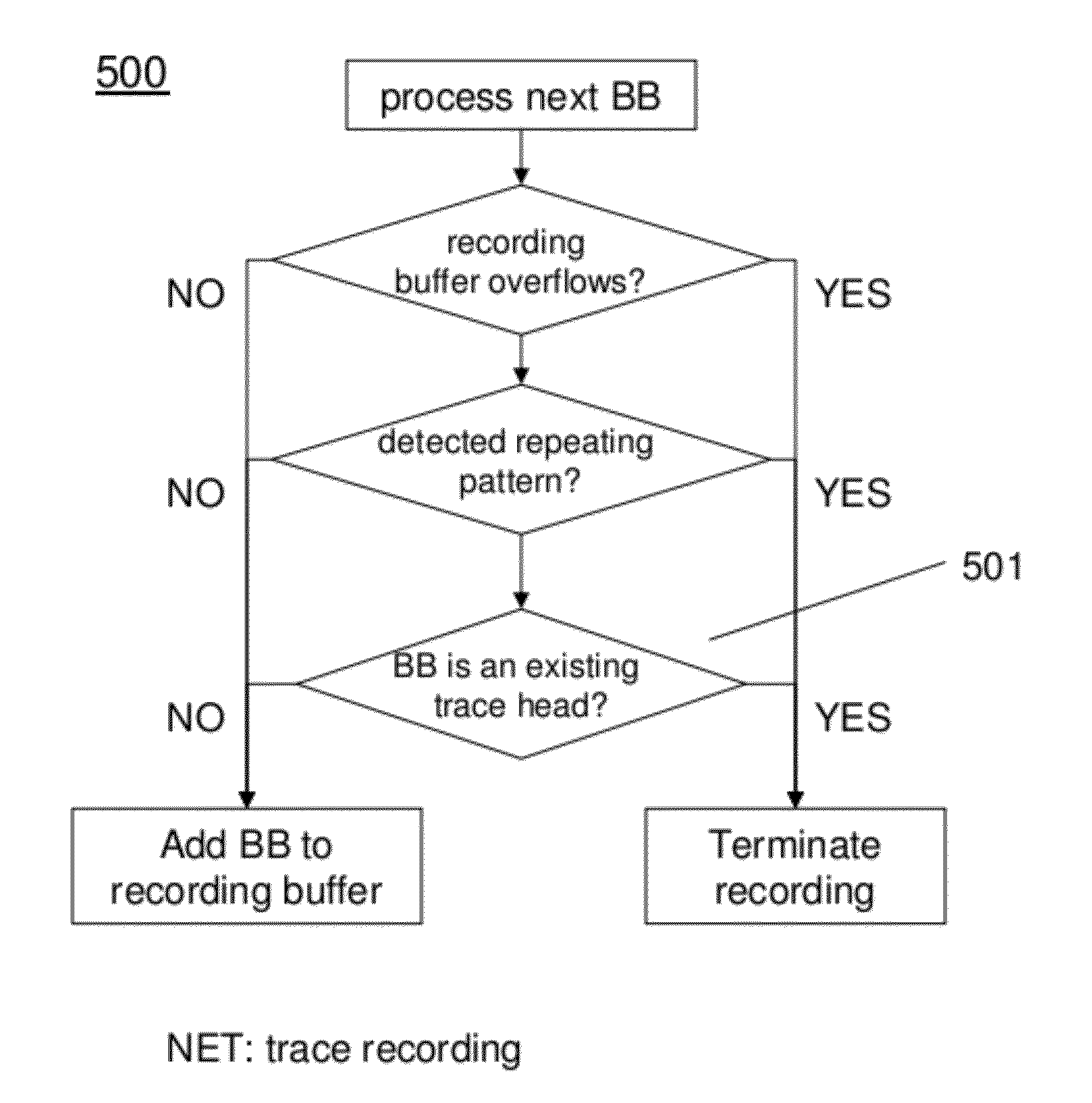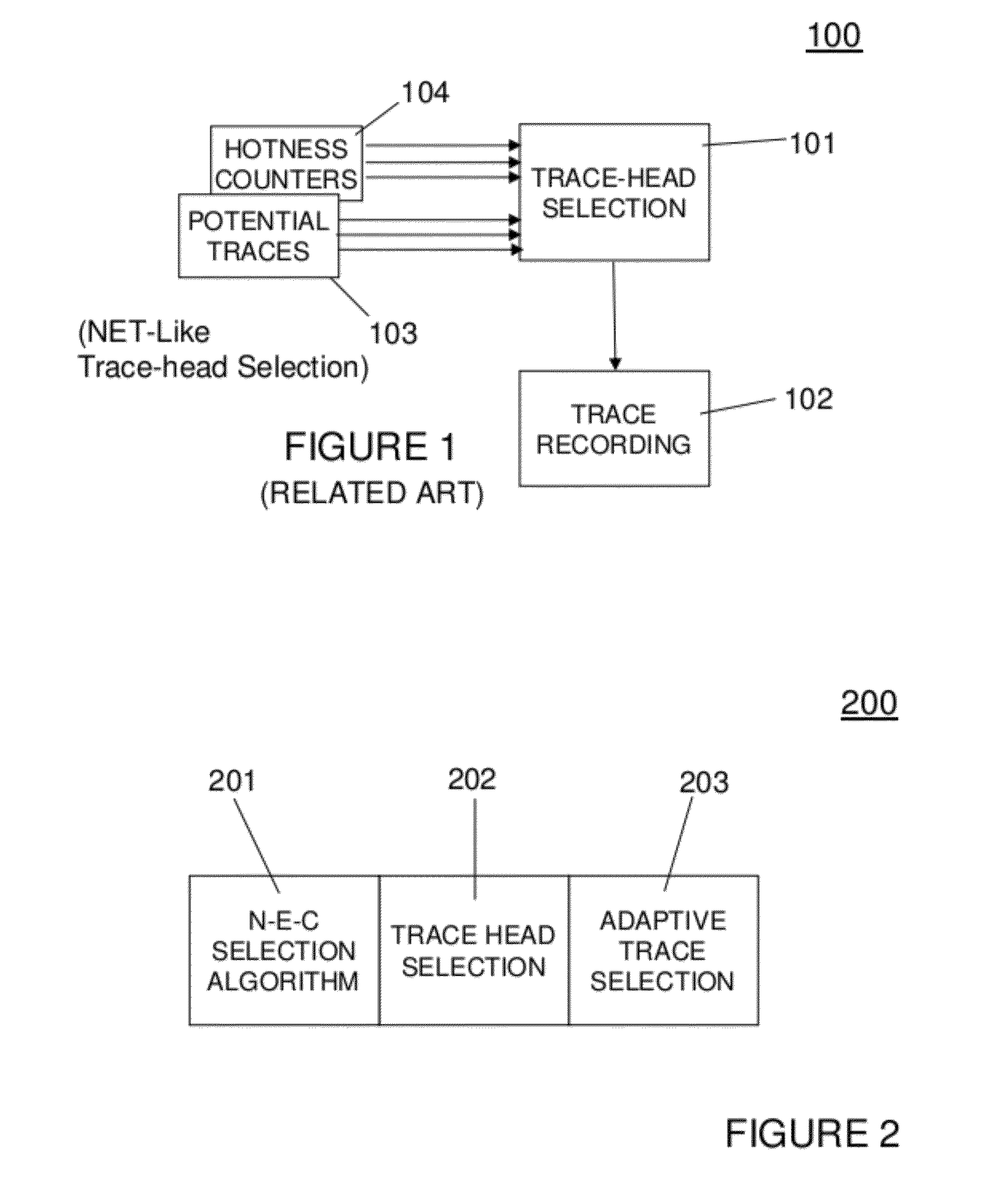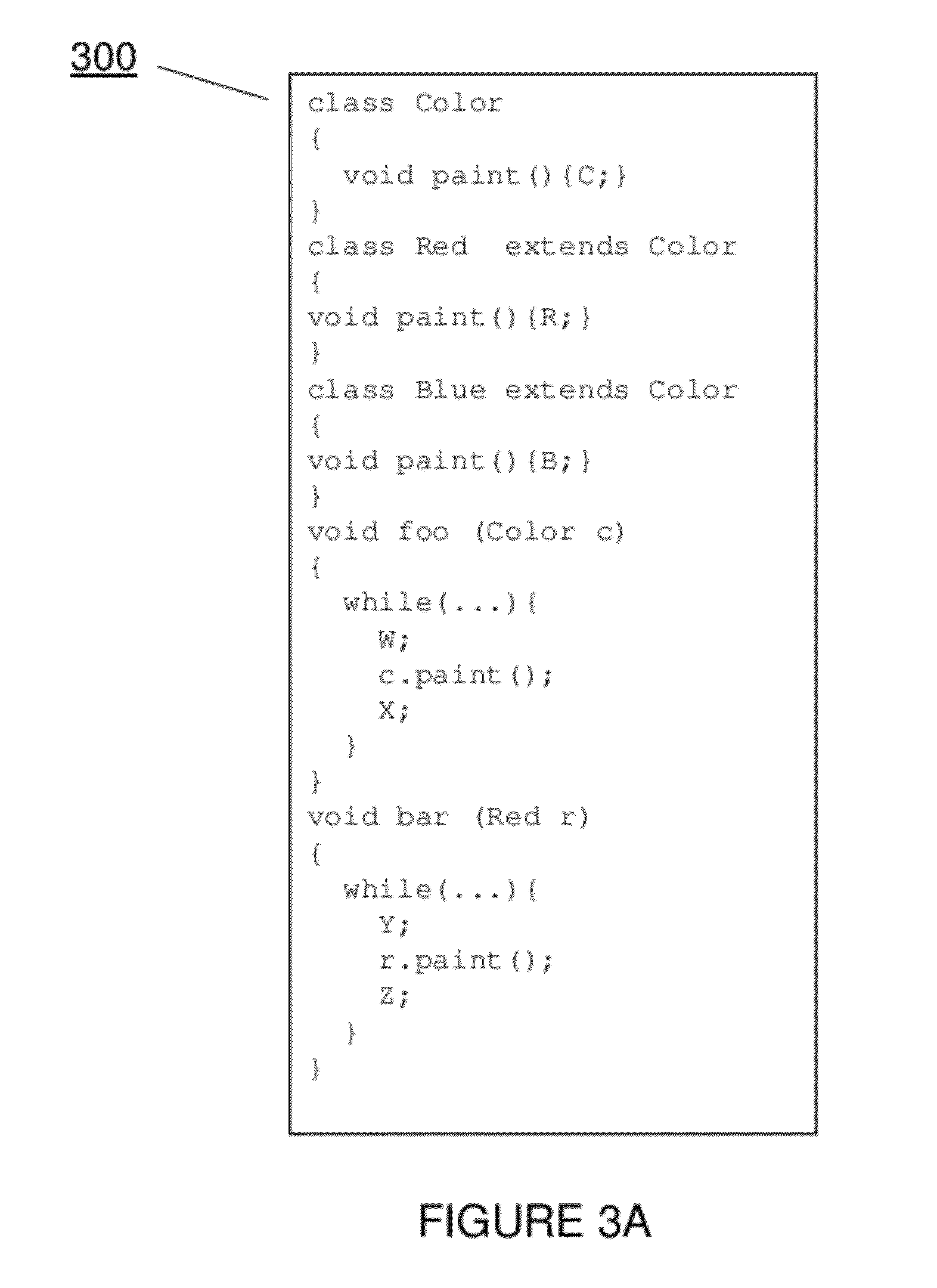Adaptive next-executing-cycle trace selection for trace-driven code optimizers
a code optimization and code technology, applied in the field of compiler processing of computer code, can solve the problems of not achieving a very high code coverage for trace-driven code optimization, unable to capture computation in reasonably sized loops, and add complexity to the optimizer, so as to improve the effectiveness of code optimization, improve the amount of computation captured, and improve the effect of program performan
- Summary
- Abstract
- Description
- Claims
- Application Information
AI Technical Summary
Benefits of technology
Problems solved by technology
Method used
Image
Examples
Embodiment Construction
[0050]Referring now to the drawings, and more particularly to FIGS. 2-12, there are shown exemplary embodiments of the method and structures according to the present invention.
[0051]The present invention provides an adaptive system to select hot traces for dynamic code optimizers. The system 200 exemplarily diagrammed in FIG. 2 includes the following three components.
[0052]In a first component 201, a new selection algorithm, referred to herein as the “next-executing-cycle” (N-E-C) selection algorithm, differs from the conventional NET-like selection algorithm in that N-E-C does not terminate a trace if trace recording encounters an existing trace-head. In other words, one aspect of the present invention is that it removes the stop-at-a-trace-head condition from the end-of-a-trace conditions of the NET-like selection algorithm, thereby addressing one of the above-mentioned problems noted by the present inventors with conventional methods.
[0053]Compared to NET-like selection, one bene...
PUM
 Login to View More
Login to View More Abstract
Description
Claims
Application Information
 Login to View More
Login to View More - R&D
- Intellectual Property
- Life Sciences
- Materials
- Tech Scout
- Unparalleled Data Quality
- Higher Quality Content
- 60% Fewer Hallucinations
Browse by: Latest US Patents, China's latest patents, Technical Efficacy Thesaurus, Application Domain, Technology Topic, Popular Technical Reports.
© 2025 PatSnap. All rights reserved.Legal|Privacy policy|Modern Slavery Act Transparency Statement|Sitemap|About US| Contact US: help@patsnap.com



